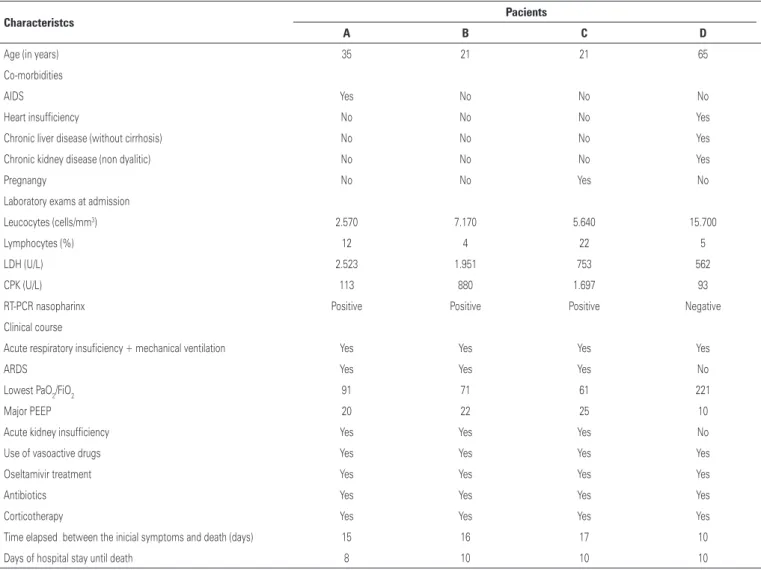Einstein (São Paulo) vol.10 número3 en v10n3a09
Texto
Imagem



Documentos relacionados
Referral to an extracorporeal membrane oxygenation center and mortality among patients with severe 2009 influenza A(H1N1).. Peek GJ, Mugford M, Tiruvoipati R, Wilson A, Allen
In studies of severe alveolar hemorrhage associated with Goodpasture’s syndrome and other conditions that affect the pulmonary capillaries, TPE has been found to be a useful
The study consisted of a review of the cases of patients admitted to a university hospital and diagnosed with 2009 pandemic influenza A (H1N1) virus infection, as confirmed by
From August 5, 2009 on, with the characterization of the pandemic outbreak of influenza A H1N1, mi- nistry and state recommendations were revised, thus being
Less common forms of pulmonary involvement reported in SSc are diffuse alveolar damage, pulmonary hemorrhage, organizing pneumonia, aspiration pneumonia, and lung dis- ease
Radiological findings are very important for establishing diagnosis of pulmonary complications in co- caine users (alveolar hemorrhage, pulmonary edema and fibrosis) and crack
To investigate whether the occurrence of severe 2009 H1N1 pandemic influenza infection in previously healthy adults is associated with cellular immune responses we examined the
GMTs for the various influenza HA1 antigens in subjects vaccinated with inactivated MF-59 adjuvated pandemic Influenza A virus (H1N1) 2009, with and without a history of